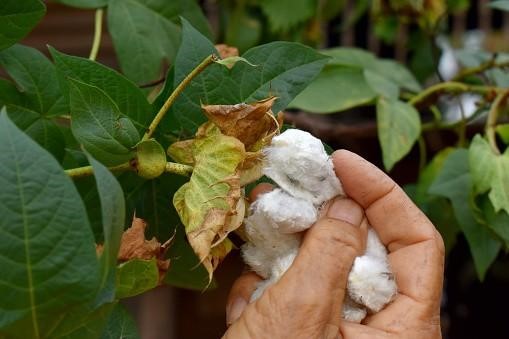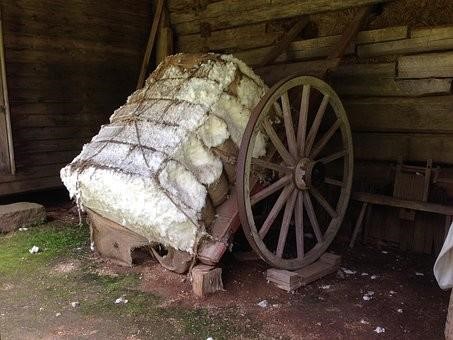
Subscribe To Emails
Subscribe to the YourCotton mailing list to receive updates on new arrivals and promotions (about once every 6 weeks)!

From white, fluffy tufts of cotton to a fabric stocked on shelves in fashion stores around the world - have you ever wondered how such a transformation is possible? In this blog post, we'll explore the incredible journey of cotton as it morphs into fabrics that make up our clothing. From how seeds are planted and harvested to the ginned fiber used to twist strands into yarn before weaving them together – there’s so much wondrous work that happens behind the scenes! Along the way, we will learn more about using sustainable sources and ethical practices in producing fashion items. So get ready for an exciting exploration into the fantastic process of transforming threads of fluff into beautiful works of art!
Cotton is an amazing and versatile natural material used by humans for thousands of years. It is derived from cotton plants, a type of shrub native to tropical and subtropical regions worldwide. Inside the cotton bolls of these plants is cotton fiber, which can be spun into cotton fabric. The fabric is usually woven in a unique loom, ultimately creating cotton fabric in various forms and patterns ranging from clothing to linens.
Because it’s breathable, warm enough for layering, and durable enough to last through countless items of washing - cotton is arguably the most popular fabric still in production. To make cotton processing faster and easier, the cotton gin was invented in 1794 by Eli Whitney. This device physically removes the seeds from cotton fibers allowing it to be harvested more efficiently. Cotton continues to play an essential role as an affordable natural resource for consumer goods worldwide today!
With four distinct varieties, cotton offers a unique and varied range of characteristics.
1. Crafted from the finest cotton, Pima Cotton offers unparalleled softness and length. Grown mainly across South America and parts of Arizona, its fibers are resilient to fading, tearing, and wrinkling—making this exquisite fabric highly sought after.
2. If you're looking for a luxurious, durable fiber to add to your wardrobe, Egyptian cotton is perfect. This fabric shares many similarities with Pima cotton; both belong to the botanical family of Gossypium Barbadense. Derived from Egypt's Nile River Valley region, this material boasts remarkable resilience that stands out among other fabrics.
3. Upland cotton, whose short fibers constitute approximately 90% of the global total cotton production, is based in Central America, Mexico, the Caribbean, and southern Florida. Thanks to its natural habitat here — plus high yield potentials—upland cotton has become a profitable crop for farmers around the world!
4. Organic cotton is a pure and sustainable textile produced from whole plants, cultivated without any harsh chemicals. A naturally grown fabric, organic cotton offers many benefits over traditional cotton alternatives.
Cotton is one of the most popular fabrics available and is used to create a wide range of clothing and accessories. To create cotton fabric, producers must grow cotton plants, extract cotton fibers from cotton seeds, and weave the threads into a textile. Although cotton production is an ancient practice, modern techniques have improved the process significantly.
For example, organic cotton is often grown without synthetic fertilizers or insecticides, resulting in a safer product for both people and the environment. As cotton production involves many steps before it can reach its final form as woven fabric, ensuring that each part of the process works in coordination with one another is critical to creating successful cotton products.

Cotton is harvested in many ways globally - from the machines used to harvest cotton in developed countries to handpicking found predominantly in developing nations. However, one type of harvesting that should not be overlooked is forced labor (or modern slavery). Regrettably, an unsettling 20% of all global cotton production relies on this unethical method. This must change, and action must be taken to end such exploitative practices forever.
To efficiently gather cotton, two machines are used - one to harvest and the other to separate.
The cotton picker was a fantastic invention that revolutionized cotton harvesting. Developed in the 1920s, it has allowed cotton producers to quickly and efficiently pick cotton from cotton plants without damaging them. Instead of manually selecting the cotton one at a time with their fingers as had been previously done, cotton pickers use revolving prongs to sweep cotton from bolls when ripe gently.
Further processing of this natural fiber is then undertaken by a carding machine, which separates cotton fibers from seed elements before being transformed into materials used for fabrics or insulation. The cotton picker thus showed a way to save both time and labor while harvesting simply and effectively, transforming our lives by making products made out of cotton more available.
Cotton strippers have become an increasingly common agricultural tool, yet their use comes with a great cost - excessive cotton waste. Though the cotton stripper can efficiently remove cotton bolls and stalks from cotton plants while preserving the cotton fiber and seeds, many of these cotton bolls do not get a chance to reach ripeness before they are abruptly removed. This means that much of the raw cotton that gets brought to cotton yarn and textile mills is partial, immature, or unusable. Ultimately this inefficient process of harvesting cotton results in wasted resources and inflated production costs for textile mills.

Crafting cotton fabric is complex, ranging from planting the seeds to harvesting them and running them through a gin.
- In the past, cotton was handpicked and segregated by people. In this day and age, however, most cotton production starts with a mechanized picker or stripper to remove the boll from its cotton plant
- After the cotton has been harvested, it is compacted into bales and stored in the fields until it is ready to be shipped off for processing at a gin.
- Cotton bales are meticulously cleansed and fluffed at the gins to separate any foreign matter, such as dirt, seeds, and lint.
- After being freed of its cotton seed, the raw cotton is carefully compressed and held in reserve for delivery to textile mills, where it will continue on its journey into production.
- After the cleansing and fluffing, cotton is sent through a carding machine for additional purification. This method transforms short fibers into an extended untwisted rope that can be used immediately in spinning and weaving techniques.
The process of turning cotton into fabrics is fascinating and has been used for centuries. Today, there are many ways to turn cotton into cloth, and each method has its benefits and drawbacks. No matter which method you choose, you can be sure that cotton will remain an essential part of the textile industry for years to come.